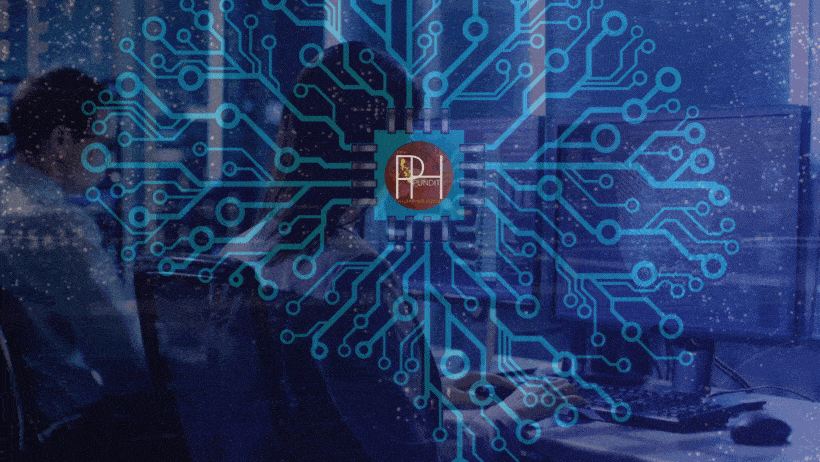🕓 Last Updated: May 8, 2025, 5:35 pm (PH time)
In many aspects of human life, ChatGPT and other associated artificial intelligence (AI) models have been increasing in impact.
Table of Contents
What is ChatGPT?
OpenAI has developed ChatGPT, a complex AI language model that is based on the GPT-3 and GPT-4 models of the Generative Pre-trained Transformer (GPT) architecture (Brown et. al., 2020). There are tons of applications for ChatGPT, considering its capability to comprehend and generate writing that is similar to that of a human (Floridi & Chiriatti, 2020).
Moreover, ChatGPT is an adaptable AI tool that uses highly advanced natural language processing (NLP) techniques to help with multiple kinds of functions, including language generation and understanding.
Although users should remain informed of its limitations and ethical implications, its wide range of uses makes it a valuable tool both in professional and private settings.
Principal Features of ChatGPT
With the capability to execute a wide range of activities with human-like proficiency, ChatGPT’s advancement represents an important breakthrough in AI and NLP. Its notable features, including universality, a vast knowledge base, and NLP capabilities, render it an essential tool in more than one field. However, to guarantee its appropriate usage and solve its drawbacks, consistent efforts are required.
Here are the key features of ChatGPT, how they are developed, and why they are so:
Natural Language Processing (NLP)
NLP is an area of AI that specializes in language-based communication between computers and humans. Machine translation, syntax, and semantics are simply a few of the areas it works on.
Meanwhile, the invention of transformers and other advances in deep machine learning have substantially improved NLP capabilities. Because of its superior comprehension and production of human language, ChatGPT can hold meaningful and pertinent discussions.
As a specialist in language-based communication, NLP renders the AI model capable of comprehending and generating text that mimics that of a human being. This allows ChatGPT to have meaningful and intelligible conversations, which is invaluable for an array of applications, such as customer and technical support, education, content generation, and entertainment.
Comprehensive Knowledge Base
Large-scale datasets, including text from books, webpages, and other written materials, are used to train ChatGPT. This is to provide ChatGPT with comprehensive and extensive knowledge across multiple subjects, allowing it to respond to inquiries, offer clarifications, and help with a variety of problems.
The AI model acquires knowledge of factual data, language patterns, and contextual awareness attributable to this comprehensive instruction. Its comprehensive understanding of an extensive range of disciplines stems from its training on a variety of datasets, which include books, webpages, and other publications.
Versatility
The architecture of the AI model and the training set of data provide versatility, enabling ChatGPT to be an all-in-one by allowing it to execute an array of operations, including content creation, tutoring, writing support, and more. The model learns to adapt to various demands and instances by being exposed to an array of text types and tasks.
Through this, a broad range of operations can be executed using ChatGPT, including question answering, explanations, synthesis of content, etc.
How ChatGPT Developed
The transformer architecture transformed NLP by enabling models to process words simultaneously and to process context with greater accuracy. It was first presented in the publication “Attention Is All You Need” by Vaswani et al. (2017). Based on this architecture, the GPT series was developed.
Initially, the GPT series was developed by OpenAI and improved upon continuously. Significant improvements for generating logical and contextually relevant text were made possible by GPT-2. These capabilities were further enhanced using further variables and improved training techniques in GPT-3 and GPT-4 (OpenAI, 2023).
During the developmental training process, unsupervised learning and fine-tuning stages are implemented. Using a sizable dataset of text, ChatGPT is first trained via unsupervised learning. This is done to teach the AI model relationships between context and linguistic patterns, which includes predicting the word that will come next in a sentence (Radford et. al., 2019).
Following this developmental training process, the AI model is optimized on specific datasets regularly with feedback provided by human reviewers. This stage ensures that the model adheres to ethical and safety standards while simultaneously improving its performance.
To address ethical problems, OpenAI uses a variety of approaches, including content screening, user input channels, and bias detection and mitigation. It even conducts continuing research and enhancements to boost the AI model’s ethical and safety requirements.

Applications of ChatGPT in Aspects of Human Life
ChatGPT and other related AI models have become significant in almost all applications in aspects of human life, especially nowadays. According to Agrawal et al. (2018), ChatGPT can be an excellent tool that improves convenience, learning, and productivity in a variety of human life aspects.
But rather than taking the place of human knowledge, AI should be utilized in harmony with it, particularly when it comes to crucial areas like financial, legal, and health guidance.
An overview of the various domains according to OpenAI that ChatGPT can be used is provided below (2024):
Education and Knowledge
ChatGPT is regarded as being the most efficient and effective in helping with language practice, translation, and grammar correction; summarizing articles; making study guides; and coming up with practice questions. It can also work best in offering explanations, responding to questions, and offering support with homework in a variety of academic areas (HBR, 2020).
Labor and Output
In aspects of labor and productivity, the AI can be sophisticated in providing support with writing reports, emails, and other paperwork.
Additionally, in the field of research, employing ChatGPT assistance is an intelligent choice in providing services for proofreading and editing, helping collect data, writing research paper summaries, and offering advice on an array of disciplines. It can also be effective and efficient in assisting with reminders, scheduling, and project management.
Personal Support
As for personal assistance, AI can organize events, create reminders, and manage calendars. It can also buy, suggest, and recommend products; locate sales with near-perfect accuracy; and evaluate product items.
Employing ChatGPT, indeed, can also serve as an excellent fitness consultant in dietary guidance and mental health resources. However, in medical aspects, it is crucial to speak with specialists.
Consumer Assistance/Customer Service
In marketing and business, using ChatGPT will be an excellent tool for automated support and customer feedback. It responds to customers’ concerns by providing product information, solving typical problems, and collecting and analyzing survey data from consumers (Gartner, 2020).
Innovation
In the field of creative endeavors, the AI model is best suited to assist in the process of storyboarding literature and idea generation (Anantrasirichai & Bull, 2021).
Also, in the field of art and design, ChatGPT can be fantastic for generating ideas for art projects, collaborating with design concepts, and providing feedback on artistic creations (Wired, 2020).
Entertainment
Concerning the entertainment industry, ChatGPT can offer the best help in text-based games, quizzes, lively discussions, and other games and trivia that amuse people. It can also be best at recommending films, novels, songs, and alternative kinds of entertainment best suited to the preferences of the user.
Social Communication and Interaction
In social interaction, ChatGPT helps supply conversation and companionship, particularly to individuals who might feel solitary.
Furthermore, in social media, this AI model helps you stay updated with post management capability, audience engagement capacity, and content creation ability.
Technical Support
Worry no more with regard to technical support. ChatGPT can adequately assist you in troubleshooting by assessing and fixing technical issues with devices and software. It can also help you debug, program, and code..
Financial and Legal Guidance
ChatGPT helps fantastically in information provision, such as providing comprehensive information on legal and financial matters. However, if you need particular counsel, you should speak with professionals.
Moreover, this AI model can also be an excellent assistant in document preparation, helping you draft documents and comprehend jargon related to finance and law.
The Limitations of ChatGPT
Despite ChatGPT’s great potential for yielding insightful and worthwhile data, its unreliability means that it should not be completely relied upon when making crucial decisions. One of ChatGPT’s drawbacks has always been the accuracy challenge.
Additionally, ChatGPT may display biases due to preferences in the training set. Despite promises to lessen this, it is something to keep in mind.
While human empathy and understanding are considerable and immensely valuable in various professional and interpersonal contexts, ChatGPT and other associated AI tools lack these aspects of human touch. Furthermore, concerns about prejudice and ethics in AI use are continually becoming more and more pressing.
It is imperative to utilize ChatGPT responsibly. According to Hao (2020), ChatGPT should not be used for harmful activities, disseminating misleading information, or creating immoral content because it is as capable of abuse as it is conceivable. ▲
💬 AI Use Disclosure: This article is AI-assisted by ChatGPT (OpenAI) and is reviewed, edited, and refined by the author and editor of The Philippine Pundit.
References:
- Anantrasirichai, Nantheera & Bull, David. (2021). Artificial Intelligence in the Creative Industries: A Review. Artificial Intelligence Review. 55. 10.1007/s10462-021-10039-7.
- Ajay Agrawal, Joshua Gans, and Avi Goldfarb. (2018). Prediction Machines: The Simple Economics of Artificial Intelligence. Harvard Business Review Press. https://dl.acm.org/doi/book/10.5555/3239975
- Brown, T., Mann, B., Ryder, N., Subbiah, M., Kaplan, J., Dhariwal, P., Neelakantan, A., Shyam, P., Sastry, G., Askell, A., Agarwal, S., Herbert-Voss, A., Krueger, G., Henighan, T., Child, R., Ramesh, A., Ziegler, D. M., Wu, J., Winter, C., Hesse, C., … Amodei, D. (2020). Language Models Are Few-Shot Learners. arXiv. Retrieved from https://arxiv.org/abs/2005.14165
- ChatGPT. (2024). Overview of AI Applications in Various Domains. OpenAI.
- Floridi, L., & Chiriatti, M. (2020). GPT-3: Its Nature, Scope, Limits, and Consequences. Minds and Machines, 30(4), 681-694.
- Gartner. (2020). The impact of AI on customer service. Retrieved from https://www.gartner.com
- Hao, K. (2020). A College Kid’s Fake, AI-Generated Blog Fooled Tens of Thousands. This Is How He Made It. MIT Technology Review. Retrieved from https://www.technologyreview.com/2020/08/14/1006780/ai-gpt-3-fake-blog-reached-top-of-hacker-news/
- Harvard Business Review. (2020). AI in education: Personalizing learning at scale. Retrieved from https://hbr.org
- OpenAI. (2023). GPT-4 Technical Report. Retrieved from https://www.openai.com/research/gpt-4
- Radford, A., Wu, J., Child, R., Luan, D., Amodei, D., & Sutskever, I. (2019). Language Models Are Unsupervised Multitask Learners. OpenAI Blog. Retrieved from https://cdn.openai.com/better-language-models/language_models_are_unsupervised_multitask_learners.pdf
- Wired. (2020). AI in art: New tools for artists. Retrieved from https://www.wired.com
The views and opinions expressed in this article are those of the author and do not necessarily reflect the official policy or position of any affiliated organization, employer, or institution. The author bears sole responsibility for the content.
📩 Subscribe to The Philippine Pundit
Stay updated with the latest news, insights, and stories. Join our mailing list today!

Regel Javines is the independent voice behind the Philippine Pundit. With roots in grassroots work and government service—from open-source research analysis with the Philippine Air Force and news desk duties at The Manila Times, to development and congressional assistance work at Congress—he brings unique insights shaped by philosophy, justice, and lived experience. His mission: to give voice to the unheard and raise questions that stir the soul.